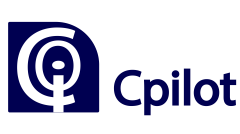Web style encompasses the procedure of fabricating and planning websites, including layout, content, artwork, and functionality. It requires a mix of creative sparkle and technical experience to create creatively appealing, user-friendly, and effective electronic interfaces. At their primary, internet style focuses on knowledge consumer wants and behavior to provide engaging and instinctive on line experiences. That multidisciplinary field features aspects of visual style, interface (UI) style, user experience (UX) style, and code to produce cohesive and functional websites that match company objectives and user expectations.
Successful web design starts with a comprehensive understanding of the market and their tastes, behaviors, and motivations. Manufacturers conduct study, analyze data, and create consumer personas to see design conclusions and make certain that the web site meets the needs and objectives of their intended users. By knowledge individual age, searching habits, and pain items, manufacturers may custom the design and functionality of the website to offer a seamless and gratifying user experience.
Additionally, web design requires making successfully convincing styles and graphics that catch users’ interest and convey the brand’s identity and message. Developers use axioms of shade idea, typography, imagery, and layout to generate visually interesting and cohesive designs that reveal the brand’s personality and values. Awareness of detail, reliability, and aesthetic hierarchy are key axioms in web design that help manual users through the web site and spotlight essential information.
Along with beauty, internet style also is targeted on simplicity and efficiency, ensuring that the internet site is instinctive, easy to understand, and available to all or any users. Developers prioritize simplicity screening, user feedback, and availability standards to recognize and address functionality issues and make certain that the website is inclusive and practical for many consumers, including individuals with disabilities or particular needs.
More over, internet design encompasses open style principles, which make certain that sites are enhanced for watching on a number of devices and screen sizes. With the raising usage of cellular devices, responsive style is essential for giving a constant and smooth individual knowledge across desktops, laptops, capsules, and smartphones. Developers use flexible layouts, liquid grids, and press queries to create open designs that conform to various monitor measurements and resolutions.
Furthermore, internet design requires integrating interactive elements and functionality to activate customers and enhance their browsing experience. From navigation selections and links to forms and animations, interactive aspects play an essential position in guiding users through the website and encouraging them to talk with the content. Manufacturers use practices such as microinteractions, hover MAYA WEB DESIGN effects, and parallax scrolling to create participating and immersive activities that hold people returning for more.

In conclusion, web design is a powerful and multifaceted control that includes creativity, specialized experience, and user-centered principles to create engaging and efficient electronic experiences. By concentrating on aesthetics, functionality, performance, and responsiveness, web site designers can make websites that not merely look good but also provide significant and satisfying experiences for users. As engineering and user expectations continue to evolve, internet design will remain a crucial part of fabricating successful on the web presences for firms, agencies, and individuals.
